
Joe Lincoln of Accord, champion decoy maker of New England, 1926. Source: Courtesy of the Boston Public Library, Leslie Jones Collection.
Sharon Macdonald is a key figure in the field of museology. From a cultural anthropology perspective she has studied and reconsidered the typical roles assigned to museums. In particular, she has questioned their selection criteria, as well as the decisions they are based on and the people that are behind them. All this in a transcultural and transnational approach. She has just been named director at the Berlin Centre for Anthropological Research on Museums and Heritage (CARMaH).
I spoke to her during “Falling Walls”, an annual meeting in Berlin seeking to break down the barriers between science and society as well as between different knowledge fields. At “Falling Walls”, several Nobel Prize Laureates in Chemistry and Physics meet with engineers such as Arjen Hoekstra, and sociologists such as Saskia Sassen or Sharon Macdonald herself. Macdonald’s talk was titled “Breaking the wall of the museums», which led me straight to my first question:
What walls should fall and why?
We must break down the usual assumptions about what is held in a museum and who decides what is collected, that is, what is preserved. We also need to rethink what to do with these objects, how to find new connections among them as well as between them and people (the audience).
Could this be somewhat related to a very thought-provoking book you put together with Paul Basu called Exhibition Experiments, where you showcased different perspectives on the format of an “exhibition”?
Yes, but not exclusively. In fact, that book was very focused on Science Communication and how to alter the concept of an “exhibition”. Now, however, I think we are headed towards an even deeper questioning of museums. I’m currently focused on the general critique of the selection, decision and preservation processes. What we are trying to figure out is what should we preserve in museums for the coming generations.
How do you approach the question of what to preserve?
I think what’s most important is opening the question up to new actors. We have reached a point in which it is necessary to question a set of assumptions on which we articulated the role of a museum, as well as the purpose of collections and their conservation. We must look to other fields where people ask themselves the same questions as museum professionals, because they are facing similar challenges. Then we should ask ourselves: “Would this idea work for museums?”. Our intention with this is to figure out how these collectives worked around the challenges that arose in deciding what to keep and what to conserve.
What collectives have grabbed your attention?
The Assembling Alternative Futures for Heritage project , for instance, is looking at a wide array of places. Among other, people’s homes: how they go about deciding what to do with objects that have sentimental value or bring memories to them. Also, my colleagues in Sweden are studying what people send to space in projects like “New Horizons”. All this gives us information on what people consider worthy of being conserved and shared with others, whether it is now or in the future. In order to free ourselves from the usual time scales, and so that we can think in much bigger terms about the future, we also study projects handling huge time scales. For instance, we look at the questions being asked in projects that have to do with handling nuclear waste. Other colleagues study these same issues in seed banks where they aim at conserving genetic diversity. We also take inspiration from projects to preserve linguistic diversity. Lastly, projects dealing with the “re-naturalisation” of future landscapes are also very interesting. In all these scenarios, we can start to understand what it is that people value as worthy of conservation for the future, a function that we can maintain in current and future museums. There are very specific, vital questions. For example, at what point do we decide to start or to stop conserving something (let’s say, a building)? Here in Germany there is a huge discussion as to what should be done with the architecture from the Nazi era. Many buildings are falling apart, but should we pay for their maintenance? And if we don’t do it and they disappear, how will coming generations approach the whole thing? A fascinating public debate is open right there. In the city of Nuremberg, for instance, a participative process has been launched about this matter. All this is relevant to question the purposes and the basic assumptions under the institution we call “museum”.
All this takes me to the entire work field around museums and participative processes. It seems as if after a few years of opening up, we are now appreciating once again experts in this field. What is your take on this?
That is a very important point. There is a discussion taking place regarding the role of majorities in these processes and how they are built. We want to analyse different participative approaches. What comes out of each of them. Do we want to hand the responsibility to the people? Do we want to get them involved in the debate but not in the final decision? Or do we just want to use their opinions? The whole point is who decides in the end. I think the answer depends on the place and the culture where this question is asked.
Your intention would be to find alternatives for future museums and for the future of current museums?
That is one of the dimensions of my work, yes. But there is another one, just as important, which is trying to answer the question of what to do with what we already have. In particular, what new connections and narratives can be created. What other purposes can be fulfilled both by collections and exhibitions. In the project I am leading in Berlin, which in part has to do with what we worked on in Exhibition Experiments, we try to understand how an exhibition works. What can we get out of an exhibition? What is it that makes an exhibition really work? How do we develop more interesting ones?
That’s the million-dollar-question.
(She laughs). Indeed! I think sometimes we are not aware of very obvious issues at work in current museums. For instances, we should take more into account the three-dimensional nature of a museum, the spacial grammar. It’s something we have yet to work on in depth, we have not made the most of it. We must explore the space syntax in a museum –the light, the sound within that space, how it’s felt and experienced. We should develop a multisensorial approach to the museum’s space.
How does this affect museums without a collection? What does your work allow for in places that are not organised around objects and collections?
I know several centres that don’t have a collection and instead focus on activities. They are very effective at communicating ideas, I would go as far as saying that places without a collection are much more effective in that regard. They have greater freedom, they can experiment with different formats. But, on the other hand, centres that do own a collection are not yet taking advantage of the density of objects, the layers of history and ideas that the very objects carry. Within centres with a collection you can still sense the battle between those who focus on the objects and those who focus on activities. But possibilities lay in both of them, and in their interaction.
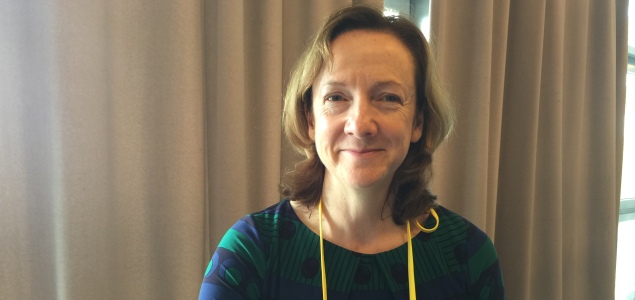
Sharon MacDonald in Berlin. Photography of Ramon Sanguesa.
As you mentioned before, the projects you are involved in study what ordinary people do to conserve, collect and pass on a part of themselves to the future. With the arrival of the digital world, we’ve witnessed a tendency toward the dematerialisation of personal memories. Does digitising entail a new way of selecting and collecting?
The digital world has a lot, a lot of potential. In particular, I think it is especially useful to keep and pass on stories around objects. On the other hand, it is becoming easier and easier at a personal level to store digital memories with almost no selection. Digitising is carried out on a massive level at many museums. The positive outcome is that it allows for the audience to connect and create their own narratives based on the collection. Not only because it connects objects, but also because the audience can link them to memories and stories in a personal way. In fact, there’s a whole opinion trend in museology suggesting we stop collecting objects and just digitalise everything. I don’t think this will work, though. For several reasons. We don’t know what qualities will be meaningful in an object in the future. For instance, a mummy allows us to study ancient diseases. This would most likely be impossible if that object, the mummy, was only stored in digital form. On top of that we need to consider the appeal of the physical presence of an object, which, for instance, leads us to think along the lines of “what must have happened to it” or “how many people must have touched it”.
Certainly, materiality will have its comeback after the digital boom. But the digital is also part of our heritage.
Exactly, both things are true. As far as your second point, we are once again dealing with the basic question of what to conserve and what to collect, given that digital storage is no longer as problematic as it used to be. Although it is true that the obsolescence of information access systems is a problem. A great maintenance effort is necessary as we develop a “digital archaeology”.
What would be the key point when it comes to creating a collection nowadays and in the near future?
I think great difficulty lays in the fact that we are now aware of our need to pass on not only the collection, but also the how and why we created it, as well as our criteria for it.
This requirement seems a bit different from the usual.
It certainly had not been expressed at the level of awareness and the scale at which we are expressing it now. And there are cultural differences (as to what patrimony is, what conservation is and what is worthy of it) which we weren’t very aware of until recently.
Exactly. I’ve always been struck by the temporality (and periodical reconstruction) of certain Japanese temples, for example.
Right. In fact, the UNESCO had to redefine what patrimony and conservation were due in part to practices like the one you mention, very different from the Western approach.
I understand the interest of taking a global perspective for your research goals. Nevertheless, thinking globally also carries with it a certain push for homogenisation in many other work areas. Not even museums are immune to, let’s say, the effect of technological ideology. Right now, even history museums are using making–workshops to draw the audiences closer to the topics. What’s your take on these tendencies?
I think they are not at all at odds with the roles of museums. Maybe it is a challenge for some museums, because it requires a very specific, well-trained kind of staff. On a positive note, this sort of activities make certain audiences engage more. More often than not, it makes people think and question things in a different way, which would not be happening with text or other formats. Sure, in some cases you have to consider what use it really serves. And it’s true that, if we go down this path, we shouldn’t fall for the idea that museums are simply “Community Centres”. They are, but they have other functions. Especially, they reflect what we consider worth passing on to future generations.
To finish up, what will you be working on in the near future?
A project that has led me to settle down in Berlin, at the Humboldt University, where we are working on integrating all these ideas regarding museums into Berlin’s own institutions as well as into an international centre for cultural heritage.
Viel Glück!
Thank you!
And, just as humbly she approached the interview table, Sharon Macdonald left us to give her talk, which you can watch here:
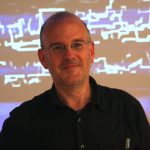
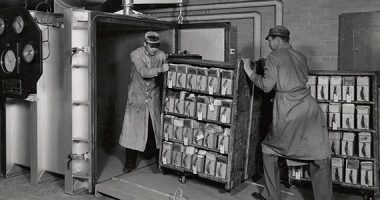
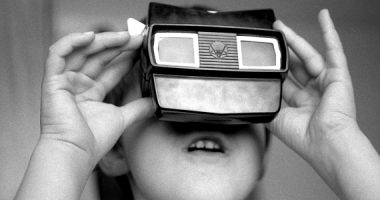
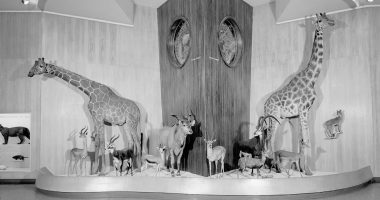
Leave a comment